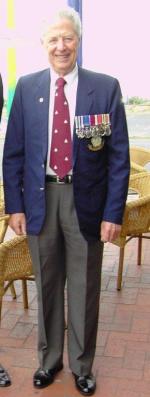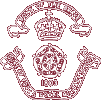The ANZACs held their line throughout the Gallipoli Campaign and were never defeated. By their tenacity and fighting abilities they earned the respect of the Turks and, as a matter of fact, vice versa. The ANZACs had developed great fighting ability and trust in each other that remains to this day. As the Kiwis are reputed to have said, 'She'll be all right, the Aussies are on the right.'
Jim Dove (Wn 1941-1945), joined the Duke of York's at Saunton and was one of the few Dukies who never saw the Dukie premises as a student. He served with the Royal Signals from 1948 to 1953 and then with the RNZ Signals from 1954 to 1969 after which he worked for Air New Zealand in communications and flight operations from 1969 to 1990, then moved to Australia and remarried, his first wife having died in 1989. In fact, Jim Dove is one among hundreds of NZ Veterans living in Australia who turn out every ANZAC Day to share the occasion with their Aussie comrades.
For ANZAC Day, 2010, Jim was invited via the NZ High Commission to lay a wreath at Kempsey, NSW, and to make an address as a member of the NZ Veterans Association. He chose as the theme of his address the part New Zealand played in the original ANZAC force because it was the first time the NZ Veterans Association had been asked for a representative to address a parade outside Sydney. Jim spoke of the Gallipoli Campaign during which the Kiwis and Aussies were welded into a first-rate fighting force, of their common distain for British class differences (neither soldier being particularly fond of saluting unless the officer concerned had their respect), and their fierce rugby contests in which no quarter was asked nor given.
By local accounts of the occasion, Jim's address on the origin of the ANZACs was well received. It had the right amount of information without being maudlin as so many such speeches are, and kept the attention of the crowd with information of interest to young and old alike. He noted that at Gallipoli 2721 Kiwis were killed and 4753 wounded out of a total force of 8450 men. That was an 88 per cent casualty rate, for the population of New Zealand at that time was a little under one million.
Jim Dove is to be congratulated for stepping into the breach to represent the NZ Veterans Association on ANZAC Day, which is celebrated with equal intensity in both Australia and New Zealand. |
 |





